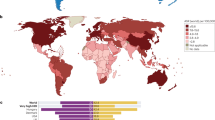Summary
BACKGROUND: Lung cancer is currently the main cause of cancer deaths in both men and women worldwide. METHODS: Review of recent literature. RESULTS: The expected 5-year survival rate for all patients in whom lung cancer is diagnosed is 15%, compared with 61% for colon cancer, 86% for breast cancer, and 96% for prostate cancer. The 5-year survival rate for patients with potentially resectable lung cancer is significantly less than 100% (stage IA, 67%; stage IB, 57%; stage IIA, 55%; stage IIB, 39%; and stage IIIA, 23%). Since cigarette smoking is known as the main risk factor, incidence, mortality and risk of lung cancer development can be certainly reduced by means of smoking cessation as well as prevention of smoking initiation among non-smokers. Regarding chemoprevention, currently there are no agents that have been proven to be effective for preventing lung cancer. Despite the fact that data from randomised studies which would support large screening programs are still not available, mortality from lung cancer could be reduced greatly through the development of molecular markers for identification of individuals at the earliest stages of lung cancer when curative resection is feasible. CONCLUSIONS: Cigarette smoking (active or passive) represents the leading risk factor and the main cause for lung cancer.
Zusammenfassung
GRUNDLAGEN: Das Lungenkarzinom verursacht weltweit den weitaus größten Anteil aller Karzinomtodesfälle in beiden Geschlechtern. METHODIK: Zusammenfassung der aktuellen Literatur. ERGEBNISSE: Die mittlere Fünfjahres-Überlebensrate nach Diagnosestellung von Lungenkrebs beträgt 15 %, nach Kolonkarzinom 61 %, Mammakarzinom 86 % und Prostatakarzinom 96 %. Die Heilungsaussicht bei Lungenkarzinom ist streng stadienabhängig und beträgt 67 % im Stadium IA, 57 % im Stadium IB, 55 % bei IIA, 39 % bei IIB und 23 % im Stadium IIIA. Da Zigarettenrauchen als der wesentlichste Risikofaktor für die Entwicklung von Lungekrebs erkannt wurde, könnten Inzidenz und Mortalität mit Sicherheit durch geeignete Maßnahmen zur positiven Beeinflussung des Rauchverhaltens verbessert werden. Bislang konnte für keine Substanz ein eindeutiger unterstützender Effekt in dieser Hinsicht bewiesen werden. Abgesehen davon, dass gegenwärtig große Screeningprogramme durch keine Daten aus randomisierten Studien gerechtfertig werden, sollten Personen mit besonderem Erkrankungsrisiko durch die Etablierung von geeigneten molekularen Markern identifiziert werden, um die Sterblichkeit an Lungenkrebs wesentlich zu beeinflussen. SCHLUSSFOLGERUNGEN: Eine Reihe von Risikofaktoren wird für die Entwicklung von Lungenkrebs angeschuldigt, wobei das Zigarettenrauchen (aktiv und passiv) als der weitaus bedeutendste angesehen wird.
Similar content being viewed by others
Author information
Authors and Affiliations
Corresponding author
Rights and permissions
About this article
Cite this article
Getman, V.V., Mueller, M.R. Epidemiology (incidence, survival), risk factors, prevention (screening). Eur Surg 36, 61–65 (2004). https://doi.org/10.1007/s10353-004-0044-0
Issue Date:
DOI: https://doi.org/10.1007/s10353-004-0044-0




